
Destinations
Discover EGYPT
Home of the ancient Pharaohs, Egypt is a destination full of dazzling temples and tombs that wow all who visit. It’s not all historic treasures and tourist attractions, though.
With vast tracts of desert for 4WD adventures, the Red Sea’s world-class coral reefs and wrecks for divers, and cruising on the famed Nile River, there are plenty of things to do for all types of travelers.
Beach lovers head to the Sinai or the Red Sea Coast to soak up the sun, while archaeology fans will have a field day in Luxor.
Cairo is the megalopolis that can’t be beaten for city slickers, while Siwa oasis and the southern town of Aswan offer a slice of the slow pace of the countryside.
With so much to see and do, Egypt offers visitors a chance to create itineraries that combine culture, adventure, and relaxation all on one trip.
Plan your sightseeing and find the best places to visit with our list of the top tourist attractions in Egypt.
Note: Some businesses may be temporarily closed due to recent global health and safety issues.
1. Pyramids of Giza
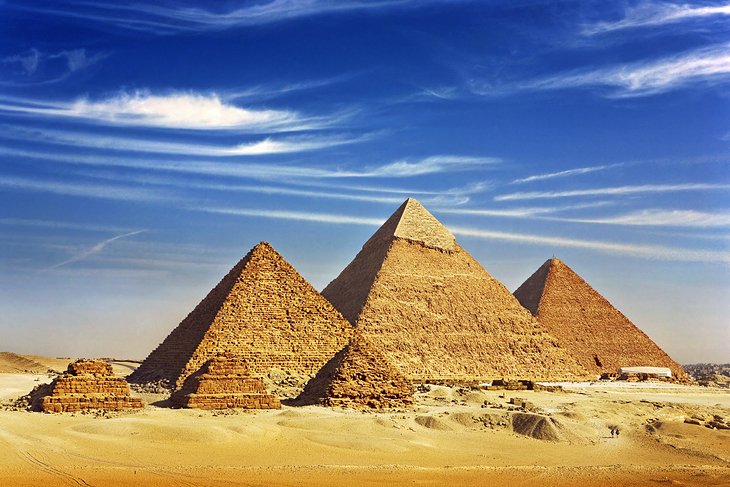
The last surviving of the Seven Wonders of the Ancient World, the Pyramids of Giza are one of the world’s most recognizable landmarks.
Having awed travelers down through the ages, these tombs of the Pharaohs Cheops (Khufu), Chephren (Khafre), and Mycerinus (Menkaure), guarded by the enigmatic Sphinx, are usually top of most visitor’s lists of tourist attractions to see in Egypt and often the first sight they head to after landing.
Today, sitting on the desert edge of Cairo’s sprawl, these megalithic memorials to dead pharaohs are still as wondrous a sight as they ever were and an undeniable highlight of any Egypt trip.
Accommodation: Where to Stay in Giza
- Read More: Pyramids of Giza: Attractions, Tips & Tours
2. Luxor’s Karnak Temple and the Valley of the Kings
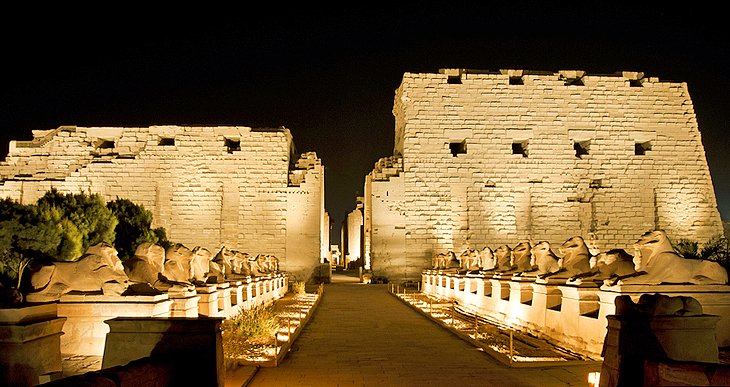
Famed for the Valley of the Kings, Karnak Temple, and the Memorial Temple of Hatshepsut, the Nile-side town of Luxor in Upper Egypt has a glut of tourist attractions.
This is ancient Thebes, power base of the New Kingdom pharaohs, and home to more sights than most can see on one visit.
While Luxor’s East Bank holds the modern city, with its vibrant souq; the two temples of Karnak and Luxor; and the museum; the West Bank‘s lush farmland and barren cliffs are where the vast majority of Luxor’s tourist attractions sit, with so many tomb and temple sights that it has been called the biggest open-air museum in the world.
Spend a few days here exploring the colorful wall art of the tombs and gazing in awe at the colossal columns in the temples, and you’ll see why Luxor continues to fascinate historians and archaeologists.
Accommodation: Where to Stay near Luxor
3. Cruising the Nile
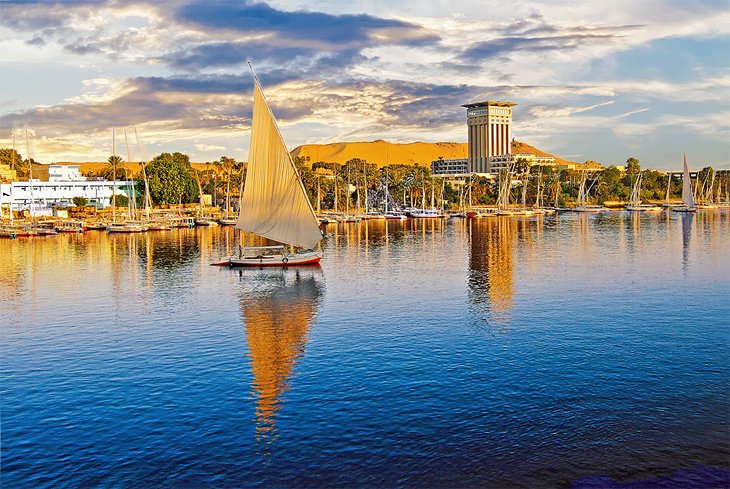
Egypt is defined by the Nile. For many visitors, a multi-day cruise upon this famed waterway that saw the rise of the Pharaonic era is a highlight of their Egypt trip.
Cruising the Nile is also the most relaxing way to see the temples that stud the banks of the river on the route between Luxor and Aswan, plus sunrise and sunset over the date-palm-studded river banks, backed by sand dunes, is one of Egypt’s most tranquil vistas.
The two famous sights on a Nile Cruise are the Temple of Kom Ombo and Edfu’s Temple of Horus, where all the big cruise boats stop.
If you’d prefer a less crowded and slower experience, though, and don’t mind “roughing it” a bit, you can also cruise the Nile by felucca (Egypt’s traditional lateen-sailed wooden boats), which also allows you to create your own itinerary.
The vast amount of cruise boat itineraries depart from either Luxor and Aswan, but feluccas can only be chartered for multi-day trips from Aswan.
4. Aswan
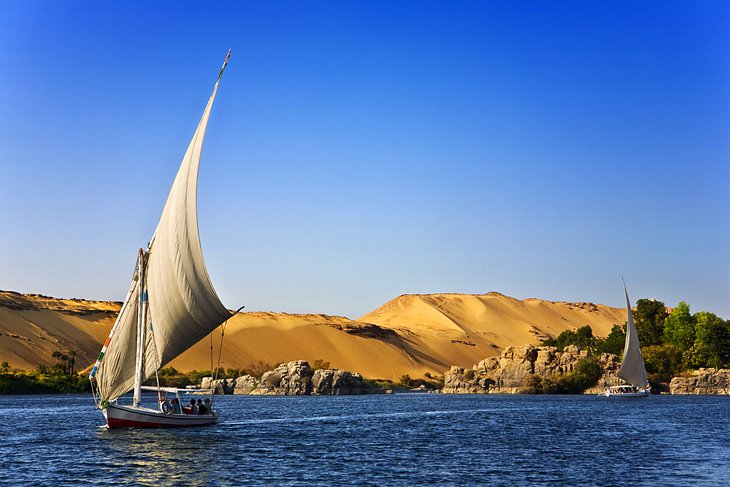
Egypt’s most tranquil town is Aswan, set upon the winding curves of the Nile. Backed by orange-hued dunes, this is the perfect place to stop and unwind for a few days and soak up the chilled-out atmosphere.
Take the river ferry across to Elephantine Island and stroll the colorful streets of the Nubian villages.
Ride a camel to the desert monastery of St. Simeon on the East Bank. Or just drink endless cups of tea on one of the riverboat restaurants, while watching the lateen-sailed feluccas drift past.
Make sure to jump aboard a felucca at sunset to sail around Aswan’s islands. This is by far, Aswan’s most popular activity and the most relaxing way to take in the local sights.
There are plenty of historic sites here and numerous temples nearby, including Philae Temple on its island, but one of Aswan’s most popular things to do is simply kicking back and watching the river life go by.
Accommodation: Where to Stay in Aswan
5. Abu Simbel
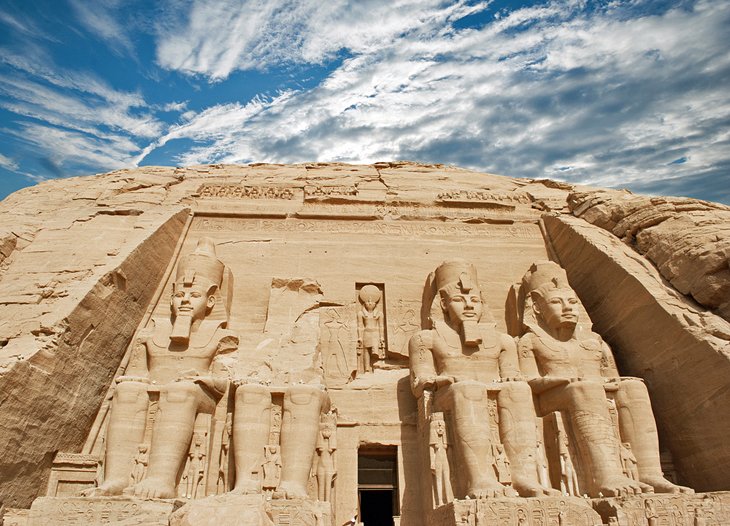
Even in a country festooned with temples, Abu Simbel is something special. This is Ramses II’s great temple, adorned with colossal statuary standing guard outside, and with an interior sumptuously decorated with wall paintings.
Justly famous for its megalithic proportions, Abu Simbel is also known for the incredible engineering feat carried out by UNESCO in the 1960s, which saw the entire temple moved from its original setting to save it from disappearing under the rising water of the Aswan dam.
Today, exploring Abu Simbel is just as much about admiring the triumph of this international effort to save the temple complex as it is about gaping in wonder at Ramses II’s awe-inspiring building works, itself.
Accommodation: Where to Stay in Abu Simbel
6. Diving the Red Sea
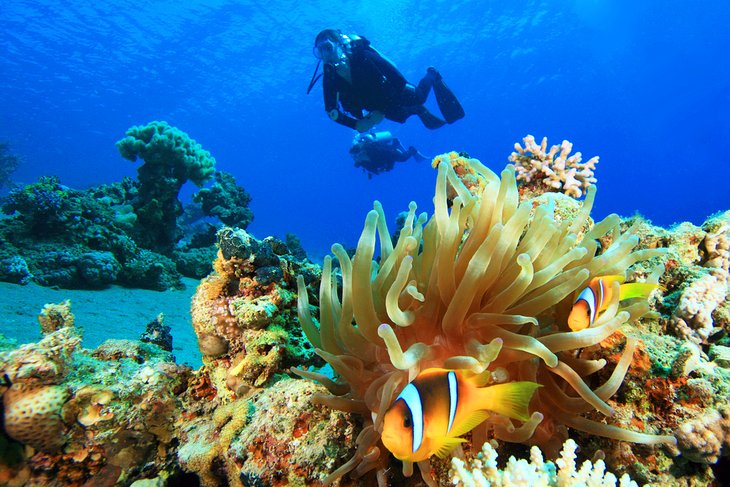
Below the Red Sea’s surface is another world as fascinating as the temples and tombs on land.
The coral reefs of the Red Sea are renowned among scuba divers for both the soft corals on display and the vast amount of sea life, ranging from colorful reef fish and nudibranchs, to sharks, dolphins, turtles, rays, and even dugongs.
For divers, the most famous town to base yourself in is Sharm el-Sheikh on the Sinai Peninsula, closest to the reefs of Ras Mohammed National Park, as well as the reefs of the Straits of Tiran.
To dive the sites of the Straits of Gubal head to Hurghada or El Gouna on the Red Sea coast, while advanced divers should check out the resort of Marsa Alam, the nearest base for diving Egypt’s “deep south” dive sites.
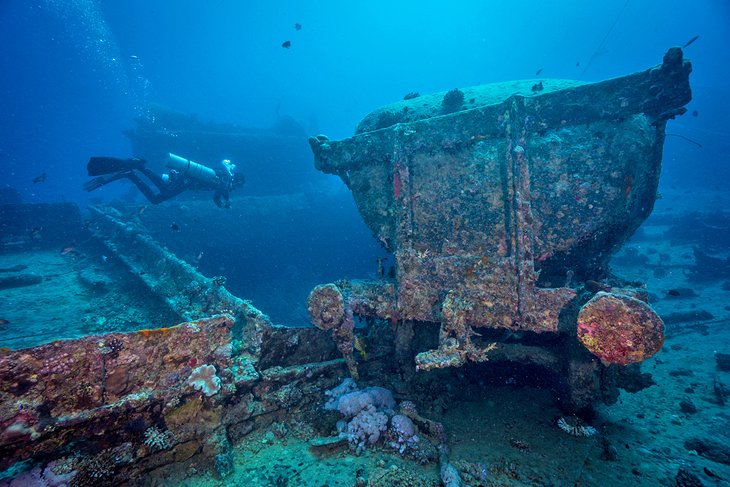
As well as fish life and coral, the Red Sea is a major wreck-diving destination. The most famous wreck is the Thistlegorm, a British WWII cargo ship that was on its way to resupply Allied troops when it was bombed by the Germans in 1941.
Today the site is regarded by divers as one of the top five wreck dives in the world due to the vast cargo of cars, motorbikes, and WWII memorabilia that can be seen both scattered on the sea bed around the wreck and inside the ship itself.
Dive boat trips to the wreck are organized from both Sharm el-Sheikh and Hurghada.
Read More: Diving in the Red Sea: Best Dive Sites
7. Explore Islamic Cairo
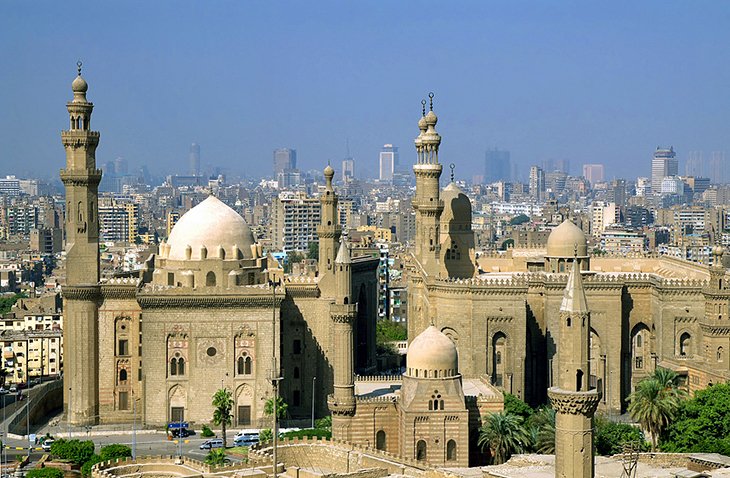
The atmospheric, narrow lanes of the capital’s Islamic Cairo district are crammed full of mosques, madrassas (Islamic schools of learning), and monuments dating from the Fatimid through to the Mameluke eras.
This is where you’ll find the labyrinth shopping souk of Khan el-Khalili, where coppersmiths and artisans still have their tiny workshops, and stalls are laden with ceramics, textiles, spice, and perfume.
Surrounding the market is a muddle of roads, home to some of the most beautiful preserved architecture of the old Islamic empires.
There is a wealth of history here to explore. Visit Al-Azhar Mosque and the dazzling Sultan Hassan Mosque, and make sure you climb to the roof of the ancient medieval gate of Bab Zuweila for the best minaret-speckled panoramas across the district.
Accommodation: Where to Stay in Cairo
8. South Sinai’s Beach Life
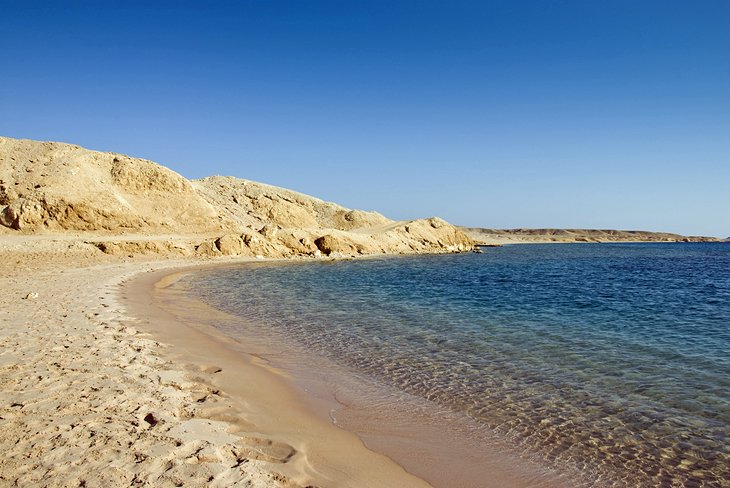
Egypt’s South Sinai region, on the Sinai Peninsula, offers a beach for every type of traveler.
Sharm el-Sheikh is a European-style resort town packed full of luxury hotels, international restaurants, and bags of entertainment options. A favorite with Europeans on winter-sun vacations, many of the resorts here cater to families on one- or two-week sun-and-sand breaks.
Dahab is a low-key beach town with a budget-traveler heart, which is just as much about desert excursions and adventures as the sea. It’s particularly known for its cheap dive-package deals and for its lagoon beach area where windsurfing and kitesurfing are the top activity.
Up the coast, between the port town of Nuweiba and the border town of Taba, are the bamboo hut retreats that offer complete get-away-from-it-all respites from life and back-to-basics beach life.
9. Saqqara
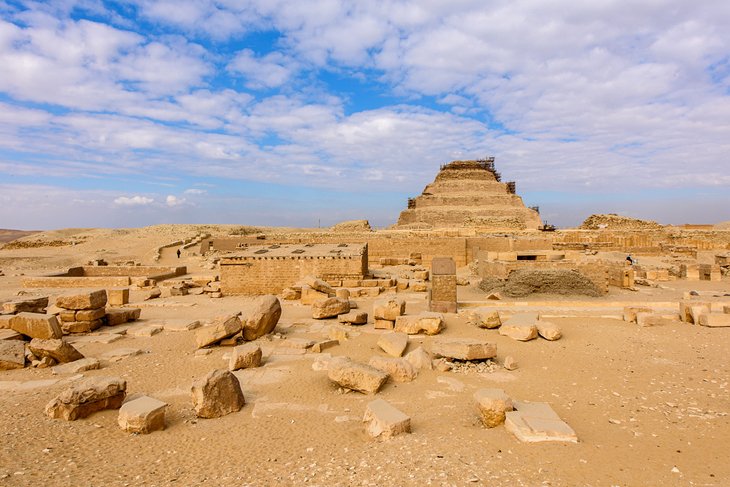
Everyone’s heard of Giza’s Pyramids, but they’re not the only pyramids Egypt has up its sleeve.
Day-tripping distance from Cairo, Saqqara is a vast necropolis of tombs and pyramids that was utilized during every era of pharaonic rule.
It’s best known for its Old Kingdom Step Pyramid, which shows how the architects of Ancient Egypt advanced their engineering knowledge to finally create a true pyramid shape.
There’s much more to see beyond the Step Pyramid, though, with some of the surrounding tombs, such as the Mastaba of Ti, showcasing some of the finest tomb paintings you’ll see in the country.
Nearby, the pyramid site of Dahshur is home to the Red Pyramid and Bent Pyramid, which should be included on any Saqqara visit.
- Read More: Exploring Saqqara: A Visitor’s Guide
10. Egyptian Museum
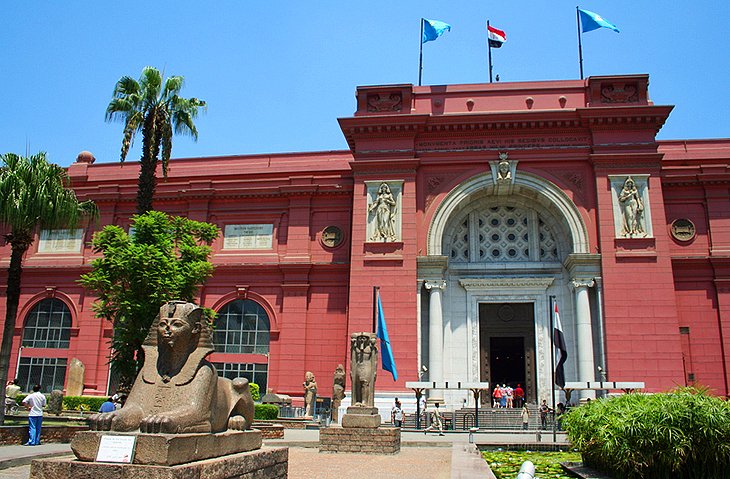
A treasure trove of the Pharaonic world, Cairo’s Egyptian Museum is one of the world’s great museum collections. The faded pink mansion in downtown Cairo is home to a dazzling amount of exhibits.
It’s a higgledy-piggledy place, with little labeling on offer and chronological order severely lacking, but that’s half of its old-school charm.
The museum’s two highlight collections are the haul of golden treasures unearthed from Tutankhamen‘s tomb in the Valley of the Kings and the fascinating Royal Mummies exhibit room.
Every corner you turn here, though, is home to some wonderful piece of ancient art or statuary that would form a highlight of any other museum.
Accommodation: Where to Stay in Cairo
11. White Desert
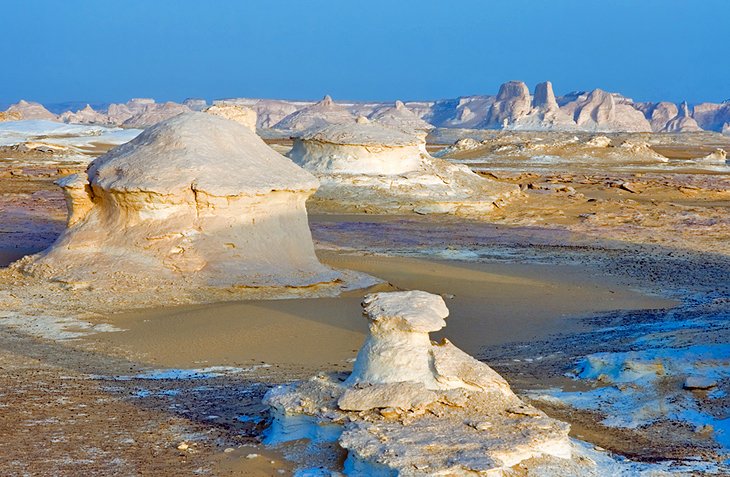
Egypt’s kookiest natural wonder is White Desert National Park, out in the Western Desert, just south of Bahariya Oasis.
Here, surreally shaped chalk pinnacles and huge boulders loom over the desert plateau, creating a scene that looks like icebergs have found themselves stranded amid a landscape of sand.
This highly scenic environment looks like something out of a science fiction movie and is a favorite destination for 4WD desert trips and overnight camping, which are both easiest organized in Bahariya Oasis.
For desert fans and adventurers, this is the ultimate weird playground, while anybody who’s had their fill of temples and tombs will enjoy this spectacular natural scenery.
12. Alexandria
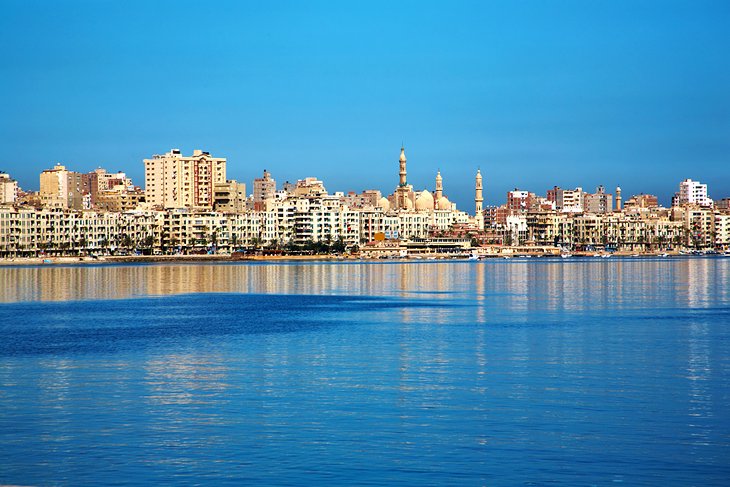
Alexandria has a history that not many others can match.
Founded by Alexander the Great, home of Cleopatra, and razzmatazz renegade city of the Mediterranean for much of its life, this seafront city has an appealing days-gone-by atmosphere that can’t be beaten.
Although today, there are few historic remnants of its illustrious past left to see, Alexandria’s long seafront Corniche road leading to its fort (sitting on the site where its famous ancient lighthouse once sat) remains a favorite summer destination to capture cooling sea breezes for Egyptians and foreign visitors alike.
Underwater archaeological projects here have imbued Alexandria’s museums with interesting exhibits. The modern Bibliotheca Alexandrina is a contemporary interpretation of Alexandria’s famed ancient library, and the handful of historic sights in town include an atmospheric catacombs site.
Accommodation: Where to Stay in Alexandria
13. Abydos Temple
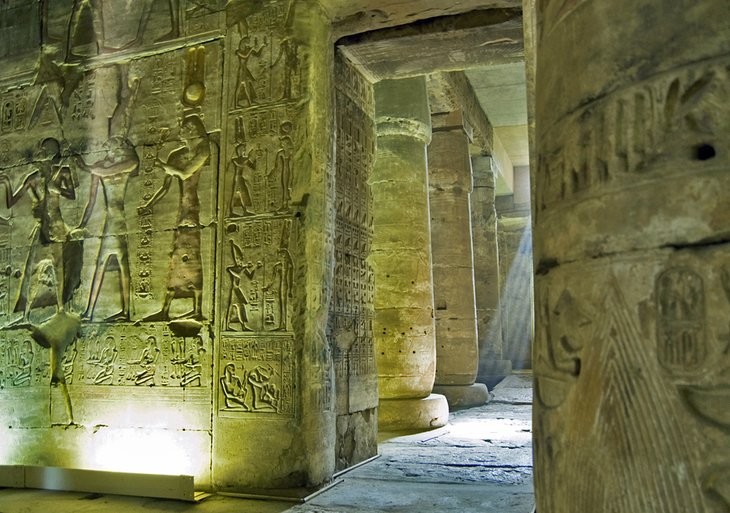
The Temple of Osiris in Abydos is one of Ancient Egypt’s most fascinating artistic treasures.
The temple, begun by Seti I, sits amid a vast necropolis site where archaeological excavations are ongoing. There a various other temple remnants to see here but for most visitors, the Temple of Osiris is the main reason to visit.
Its hypostyle halls, graced by papyrus-headed columns, contain some of the finest relief-work in Egypt, with various scenes portraying the pharaoh and the gods of Ancient Egypt.
As the temple lies north of Luxor, it isn’t on the main Nile cruise ship route, so it receives much fewer visitors than the temple sites in Luxor itself and the Nile-side temples to the south. This means you are often lucky enough to wander through the temple’s halls with only a few other visitors on site.
14. Siwa Oasis
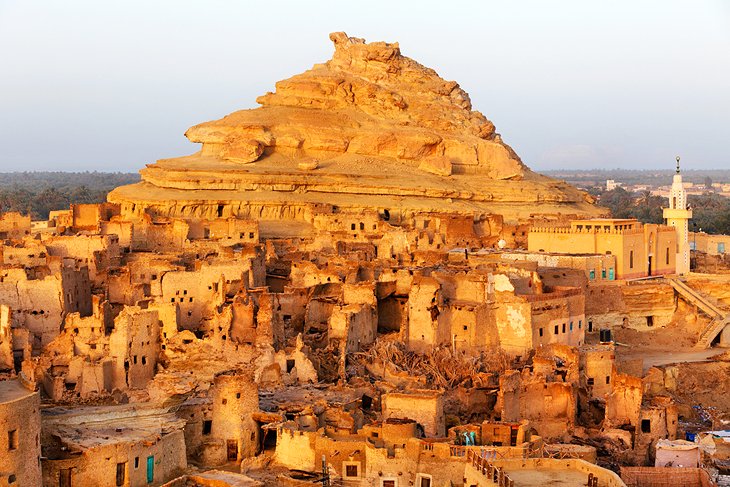
Sitting in isolation, in the western corner of the Western Desert, Siwa is the tranquil tonic to the hustle of Egypt’s cities.
This gorgeous little oasis, surrounded by date palm plantations and numerous hot-water springs, is one of the Western Desert’s most picturesque spots.
Siwa town is centered around the ruins of a vast mud-brick citadel, known as the Fortress of Shali, which dominates the view, while various temple remnants, including the Temple of the Oracle where Alexander the Great is said to have come to receive advice, are scattered throughout the wider oasis area.
This is a top spot to wind down and go slow for a few days, as well as being an excellent base from which to plan adventures into the surrounding desert.
